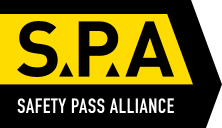NHS Trust in court after workers potentially exposed to asbestos
- Date:
- 20 August 2014
An NHS Trust has been fined after it was found likely to have exposed workers to potentially fatal asbestos material for more than a decade at its three hospitals in Hertfordshire.
Between April 2000 and December 2011, the estates team at West Hertfordshire Hospitals NHS Trust was maintaining buildings at Watford General Hospital, Hemel Hempstead Hospital and St Albans Hospital without knowing that asbestos was present or being trained to identify and control exposure.
The estates team, whose work is to carry out small repairs and maintenance projects where external contractors are not needed, could have disturbed asbestos fibres in the course of a job, but would have had no way of knowing or of protecting themselves.
St Albans Crown Court was told that over the 11-year period, the Trust had identified some of the asbestos materials at their sites but did not have a management or monitoring plan in place to control the risks associated with the deadly fibre.
It was only when additional surveys were carried out in December 2011 that the Trust realised more asbestos was present at all three hospitals than initially identified. Neither the newly identified asbestos nor the material that had originally been identified were being managed. The Trust alerted the Health and Safety Executive (HSE), which investigated and brought a prosecution for health and safety breaches against the Trust today (20 August).
The court heard the NHS Trust immediately put control measures in place after the survey results came back. Unfortunately, the extended lack of awareness reiterated that it had caused workers to potentially be exposed over a significant period of time, which constituted a major failure on its part.
West Hertfordshire Hospitals NHS Trust, of Vicarage Road, Watford, Hertfordshire, was fined £55,000 and ordered to pay £ 34,078 in costs after pleading guilty to four breaches of the Control of Asbestos Regulations 2006 and a single breach of the Health and Safety at Work etc Act 1974.
Speaking after the hearing, HSE Inspector Sandra Dias said: “Employers have a duty to protect their staff from the long term health risks associated with asbestos, which include lung cancer and mesothelioma.
“This duty includes finding out whether the premises contains asbestos, assessing the risks and making a plan to manage that risk and act on it.
“West Hertfordshire Hospitals NHS Trust did not adequately manage the risk over an 11-year period. As a result, a number of its employees will now have to spend the rest of their lives not knowing whether they have been exposed. We all hope that none will suffer as a result.”
Around 4,500 people die every year as a result of breathing in asbestos fibres, making it the biggest single cause of work-related deaths in the UK. Airborne fibres can become lodged in the lungs and digestive tract, and can lead to lung cancer or other diseases, but symptoms may not appear for several decades.
Further information on how to reduce the risk of asbestos can be found on the HSE website at www.hse.gov.uk/asbestos/index.htm
Notes to Editors:
- The Health and Safety Executive is Britain’s national regulator for workplace health and safety. It aims to prevent death, injury and ill health. It does so through research, information and advice, promoting training, new or revised regulations and codes of practice, and working with local authority partners by inspection, investigation and enforcement.www.hse.gov.uk
- Regulation 4(8)(c) of the Control of Asbestos Regulations 2006 states: “Where the assessment shows that asbestos is or is liable to be present in any part of the premises the dutyholder shall ensure that measures which are to be taken for managing the risk are specified in the written plan.”
- Regulation 4(10)(b) of the Control of Asbestos Regulations 2006 states: “The dutyholder shall ensure that the measures specified in the plan are implemented.”
- Regulation 10(1)(a) of the Control of Asbestos Regulations 2006 states: “Every employer shall ensure that adequate information, instruction and training is given to those of his employees who are or who are liable to be exposed to asbestos, or who supervise such employees, so that they are aware of: the properties of asbestos and its effects on health, including its interaction with smoking; the types of products or materials likely to contain asbestos; the operations which could result in asbestos exposure and the importance of preventive controls to minimise exposure, safe work practices, control measures, and protective equipment; the purpose, choice, limitations, proper use and maintenance of respiratory protective equipment; emergency procedures; hygiene requirements; decontamination procedures; waste handling procedures; medical examination requirements; and the control limit and the need for air monitoring.”
- Regulation 11(1)(b) of the Control of Asbestos Regulations 2006 states: “Every employer shall— where it is not reasonably practicable to prevent exposure — (i) take the measures necessary to reduce the exposure of his employees to asbestos to the lowest level reasonably practicable by measures other than the use of respiratory protective equipment; and (ii) ensure that the number of his employees who are exposed to asbestos at any one time is as low as is reasonably practicable.”
- Section 2 of the Health and Safety at Work Act etc. 1974 states: “It shall be the duty of every employer to ensure, so far as is reasonably practicable, the health, safety and welfare at work of all his employees. Without prejudice to the generality of an employer’s duty under the preceding subsection, the matters to which that duty extends include in particular: the provision and maintenance of plant and systems of work that are, so far as is reasonably practicable, safe and without risks to health; arrangements for ensuring, so far as is reasonably practicable, safety and absence of risks to health in connection with the use, handling, storage and transport of articles and substances; the provision of such information, instruction, training and supervision as is necessary to ensure, so far as is reasonably practicable, the health and safety at work of his employees; so far as is reasonably practicable as regards any place of work under the employer’s control, the maintenance of it in a condition that is safe and without risks to health and the provision and maintenance of means of access to and egress from it that are safe and without such risks; the provision and maintenance of a working environment for his employees that is, so far as is reasonably practicable, safe, without risks to health, and adequate as regards facilities and arrangements for their welfare at work.”
- HSE news releases are available at http://press.hse.gov.uk.



















